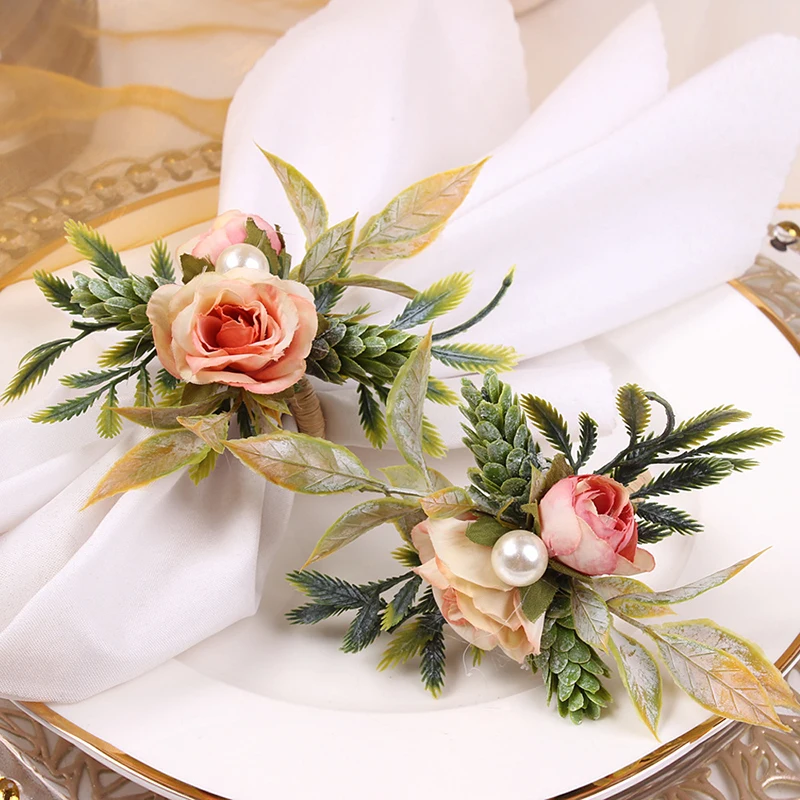
Introduction
Napkin holders, often an overlooked element of table decor, play a crucial role in enhancing the dining experience. They offer both functionality and aesthetic appeal, keeping napkins organized and easily accessible while adding a touch of style to the table. This comprehensive guide explores the different types, materials, designs, and uses of it, along with tips for choosing the perfect one for any occasion.
The Importance of Napkin Holders
These serve multiple purposes, making them an essential part of any dining setup:
- Organization: They keep napkins neatly arranged and within reach, preventing clutter and ensuring a tidy table.
- Aesthetic Appeal: Napkin holders can complement the table decor and contribute to the overall dining ambiance.
- Practicality: They provide a designated spot for napkins, making it convenient for guests to access them when needed.
Types of Napkin Holders
Napkin holders come in various styles, each designed to suit different needs and occasions:
- Standing Napkin Holders:
- Description: These holders keep napkins upright, featuring a vertical design that allows for easy grabbing.
- Usage: Ideal for both casual and formal settings, they add a touch of elegance and can accommodate various napkin sizes.
- Horizontal Napkin Holders:
- Description: Napkins lie flat in these holders, usually in a stack, often with a weight or bar to keep the napkins in place.
- Usage: Perfect for outdoor or casual dining, they prevent napkins from blowing away in the wind.
- Ring Napkin Holders:
- Description: These holders are individual rings into which a folded napkin is inserted, often used for decorative purposes.
- Usage: Commonly used in formal dining settings, they add a sophisticated touch to the table.
- Dispenser Napkin Holders:
- Description: Designed for convenience, these holders allow napkins to be pulled out one at a time, similar to a tissue dispenser.
- Usage: Suitable for everyday use, especially in kitchens and casual dining areas.
- Decorative Napkin Holders:
- Description: Often featuring intricate designs, artistic elements, or themed decorations, serving both functional and decorative purposes.
- Usage: Ideal for special occasions, holidays, or themed parties, adding a unique touch to the table decor.
Materials Used in Napkin Holders
The material of a napkin holder influences its durability, appearance, and suitability for different settings:
- Wood:
- Warmth and Versatility: Wooden napkin holders offer a natural and warm look, available in various finishes and styles.
- Durability: They are sturdy and can withstand regular use, making them suitable for both casual and formal settings.
- Metal:
- Elegance and Strength: Metal holders, including stainless steel, brass, and wrought iron, offer a sleek and elegant appearance.
- Variety: They come in various designs, from minimalist to ornate, and are often used in both modern and traditional table settings.
- Ceramic and Porcelain:
- Artistic and Decorative: Ceramic and porcelain holders often feature intricate designs and patterns, adding a decorative element to the table.
- Fragility: While they are beautiful, they can be fragile and are best suited for formal or special occasions.
- Plastic:
- Practicality and Affordability: Plastic napkin holders are lightweight, affordable, and available in a wide range of colors and designs.
- Durability: They are durable and easy to clean, making them ideal for everyday use and outdoor dining.
- Glass:
- Elegance and Sophistication: Glass holders offer a refined and sophisticated look, often featuring etched or colored designs.
- Care: They require careful handling and are best suited for formal dining settings.
Choosing the Right Napkin Holder
Selecting the right napkin holder involves considering the occasion, table setting, and personal style:
- Occasion:
- Casual Dining: For everyday meals, choose practical and durable holders, such as plastic or wooden options.
- Formal Dining: For special occasions or formal dinners, opt for elegant materials like metal, glass, or ceramic.
- Table Setting:
- Coordinating Decor: Choose a napkin holder that complements your table decor, whether it’s modern, rustic, traditional, or eclectic.
- Size and Shape: Ensure the holder fits well on your table without taking up too much space or looking out of place.
- Personal Style:
- Minimalist: If you prefer a clean and simple look, opt for sleek designs in neutral colors or materials like metal or glass.
- Artistic: For a more decorative touch, choose holders with intricate designs, patterns, or themed decorations.
- Functionality:
- Ease of Use: Consider how easy it is to grab a napkin from the holder, especially in busy or informal settings.
- Capacity: Choose a holder that can accommodate the number of napkins you typically use, ensuring you don’t run out during meals.
Caring for Your Napkin Holders
Proper care and maintenance can extend the life of your napkin holders and keep them looking their best:
- Cleaning:
- Wood: Wipe with a damp cloth and occasionally treat with wood polish to maintain its finish.
- Metal: Clean with a damp cloth and polish with a metal cleaner to prevent tarnish and maintain shine.
- Ceramic and Porcelain: Hand wash with mild soap and water, avoiding harsh chemicals that can damage the finish.
- Plastic: Wash with warm, soapy water and rinse thoroughly, avoiding abrasive cleaners that can scratch the surface.
- Glass: Clean with a glass cleaner or mild soap and water, and handle carefully to prevent chips and cracks.
- Storage:
- Avoid Crowding: Store napkin holders in a way that prevents them from scratching or damaging each other, especially for delicate materials like glass and ceramic.
- Dry Thoroughly: Ensure holders are completely dry before storing to prevent mold, mildew, and rust, particularly for metal and wooden holders.
- Handling:
- Gentle Use: Handle delicate materials like glass and ceramic with care to avoid chips, cracks, and breakage.
- Regular Maintenance: Periodically inspect holders for any signs of wear and address any issues promptly to keep them in good condition.
Conclusion
Napkin holders are a practical and stylish addition to any dining table, offering both organization and aesthetic appeal. With a variety of types, materials, and designs to choose from, there is a one to suit every occasion and personal style. By understanding the different options and how to care for them, you can enhance your dining experience and keep your table looking its best.


